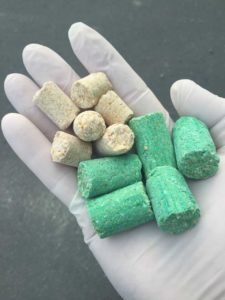
The Hunua Ranges will shortly get another dosing of 1080 to combat possums, rats and stoats.
Auckland Council’s second planned aerial pest control operation in the Hunuas and surrounding land will get underway in the coming weeks.
The operation will take place across the Hunua Ranges, Waharau and Whakatiwai regional parks; Department of Conservation (DoC) administered lands, including Mataitai Conservation Area, and some adjoining private land.
Council said in a media release the programme is focussed on protecting the significant Hunua forest and its native species, including the threatened kokako, from pests like possums, rats and stoats.
The process will begin with a non-toxic pre-feed of cereal baits over the 23,000 hectare operational area. This will be followed soon afterwards by the application of baits containing 1080 (sodium fluoroacetate). To manage such a large area and protect water supply reservoirs, the operational area will be treated in two separate blocks for the toxic bait application.
Councillor Penny Hulse, chair of the council’s Environment and Community Committee, says this programme follows the first successful operation carried out in 2015, which achieved “incredible results” for the health of the forest.
“After the last operation, the lowest-ever range-wide number of rats and possums were recorded, resulting in a significant increase in the number of endangered kokako chicks hatching over the next two seasons.
“As expected, in the three years since the last operation, the numbers of pests has begun to creep up again. By repeating pest control we can ensure the protection of our precious forest and the threatened species that live within it.
“In planning this year’s operation, our team has used the experience and success of 2015 to finalise a plan that builds on gains made previously. We are now waiting for clear weather so that we can get started.”
The media release says this is a well-planned, complex operation and people are urged to read the information on the council’s website. “Here you can find out more about the operation and the use of 1080, how it is being carried out and the safety measures in place.”
Once application dates are confirmed, the website will be updated with further details and park closure information.
Important information
- 1080 is a deadly toxin – anyone visiting the ranges must observe warning signage and ensure that children do not touch or eat the toxic baits.
- Dogs are also at risk – if you must visit the ranges (where dogs are permitted), supervise your dog at all times and do not allow it to scavenge baits or carcasses. If you suspect your dog has been poisoned, induce vomiting and immediately go to a vet.
- The treatment area is around 23,000 hectares and includes Hunua Ranges, Waharau and Whakatiwai regional parks; the Department of Conservation (DOC) administered Mataitai Forest Conservation Area, Tai Rawhiti Scenic Reserve, Papa Turoa Scenic Reserve, Whakatiri Scenic Reserve, Plows Road Conservation Area, Paparimu Conservation Area, Mangatawhiri Forest Conservation Area, Vining Scenic Reserve and Richard Sylvan Memorial Reserve and some adjoining private land.
The area has been divided into two blocks which will be treated as follows:
- Application of non-toxic pre-feed bait to the whole operational area.
- Application of toxic bait (containing 1080) to block one (7-10 days after the pre-feed).
- Application of toxic bait to block two (there will be at least two days between the treatment of blocks one and two).
The regional parks and the tracks on DOC land will be closed while bait is applied and until a rigorous track clearance programme has been completed.
Helicopters will not fly over the public water reservoirs; setbacks are in place around the reservoirs and the supply from the reservoirs to the water treatment plant will be disconnected while each block is being treated. Reservoirs will not be returned to service until extensive monitoring has been carried out and the water has tested clear.









